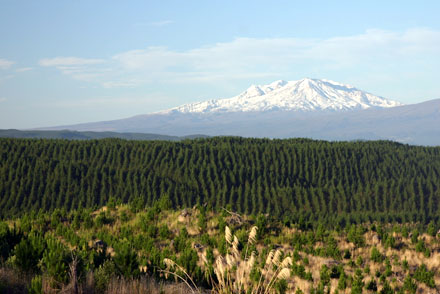
New Zealand’s Wellbeing Budget will enable further transformation of the country’s forestry sector after the successful rollout of the Government’s One Billion Trees program, according to Forestry Minister Shane Jones. The NZ government has called it the Wellbeing Budget as it says it is committed to putting people’s wellbeing and the environment at the heart of its policies. Source: Timberbiz
“Forestry plays a key role in many of our Government’s priority areas – enhancing regional development, supporting Maori to realise the potential of their land, improving water quality, reducing carbon emissions and creating jobs,” Minister Jones said.
“The One Billion Trees ambition is ahead of target. The Wellbeing Budget is delivering NZ$58 million in funding to ensure this remains the case while also catalysing further transformation of such an important sector.
“The funding will allow Te Uru Rākau (Forestry New Zealand) to increase its regional presence to ensure foresters and landowners have the support they need and will also see the agency focus on the Government’s goal of developing a sustainable, domestic forestry workforce.
“A key part to achieving our vision for the sector will be delivering in the regions and we will see new premises built in Rotorua – the heart of the forestry sector – showcasing the use of wood in construction and accommodating Te Uru Rākau’s growth.
“By growing the regional presence, we have a huge opportunity to work even more closely with landowners – particularly Māori and farmers – to revitalise our regions and create real benefits across the country.
“Forestry is a great choice which will help landowners to diversify their income, invest in a sustainable future and increase productivity through improved land-use, including tackling erosion.
“Along with this, we will see Te Uru Rākau lead important work to capture and add value to the sector. They have been tasked with strengthening the domestic market for wood products and working closely with the sector to support investment in forestry.
“One of the priorities for the wellbeing budget is to transform the economy. This announcement will help us to do this in a sustainable way.”
Forestry is a very significant industry in New Zealand and directly employs 20,000 people and is forecast to contribute NZ$6.8 billion to the economy in 2019, an increase of 7% from 2018.
Wood products are New Zealand’s third largest export earner behind dairy and meat.
Te Uru Rākau, Forestry New Zealand was launched in May 2018. In its first year it has led to the following:
- 61 million trees planted since the One Billion Trees Program was launched.
- Crown Forestry entering into 21 commercial joint venture – many of which will enable Māori to realise the potential of their land and enable the planting of nearly 11 million trees;
- Launching the One Billion Trees Fund and entering into 15 partnerships (approximately NZ$28 million) and approving 36 tree planting grants (approximately NZ$2.4 million);
- At least 52 full-time equivalent jobs created with a further 50 trainees, with the potential to grow;
- Approving nearly NZ$36 million of funding over four years to establish over 13 million trees on more than 21,000 hectares of hill country erosion prone land;
- Launching Matariki Tu Rākau in partnership with regional communities, enabling the planting of approximately 40,000 trees;
- Introducing Ngā Karahipi Uru Rākau – the Forestry Scholarships program awarded eight scholarships in 2019;
- In conjunction with Corrections, developed a workplace pilot program that will provide up to 15 prisoners from Northland Region Corrections facilities with Forestry training and work experience; and
- Streamlined the overseas investment process for forestry.
Budget 2019 is said to enable Te Uru Rākau to achieve the following outcomes over the next four years:
- Development of a modern Forestry Strategy setting the strategic direction for the sector covering commercial and indigenous forestry, trees and wood processing for the next 20 years;
- Review the Forest Act 1949 to reflect developments in domestic and international approaches to sustainable forestry management;
- Implement a workforce strategy to provide sustainable jobs, training and clear career pathways;
- Research factors affecting the wood supply for local wood processors;
- Build a new office in Rotorua to accommodate the anticipated growth of regional staff and demonstrate the value of using wood in construction;
- Provide easy access to Te Uru Rākau research material to support decision making through the development of a knowledge hub.






